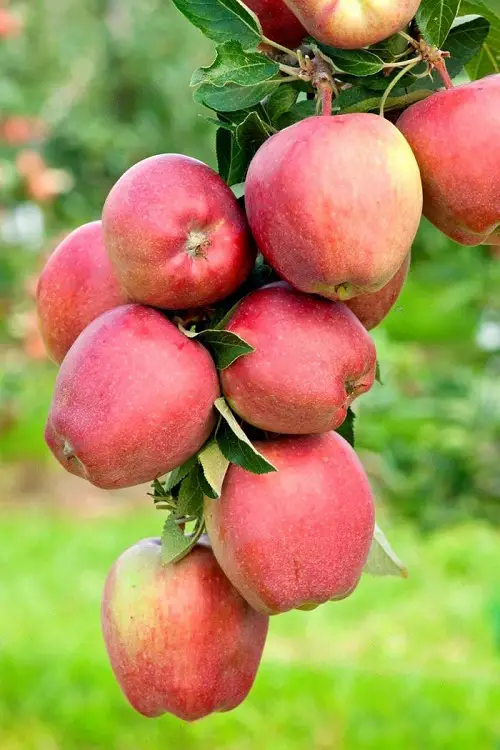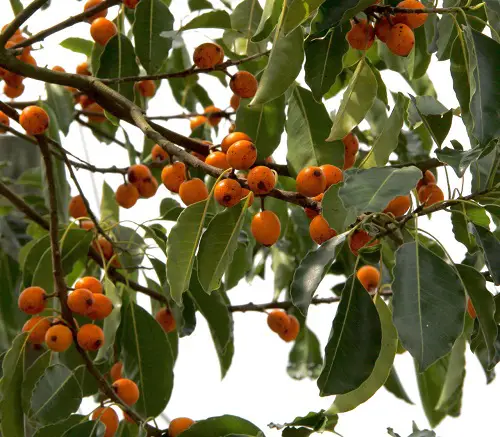Look at this collection of Fruits That Start With F. Each fruit brings its own distinct flavor and nutritional benefits to your platter!
This list of fruits is not just for an educational foray but an invitation to taste and relish the diverse offerings of Mother Nature’s bounty!
Fruits That Start With F
1. Florida Cherry
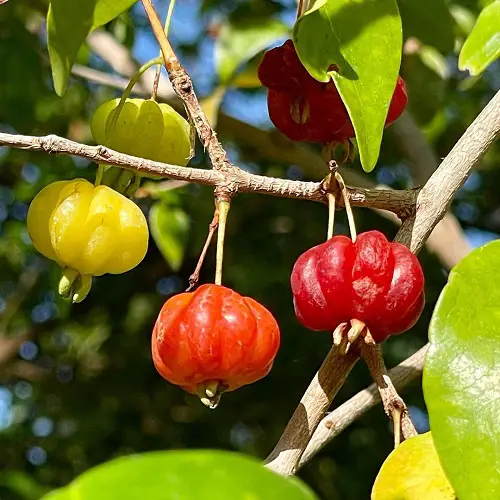
Botanical Name: Eugenia uniflora
USDA Zones: 9b-11
The Florida cherry is a fruit-bearing shrub or small tree of South America. It produces round, fleshy, orange-hued fruits that are safe for human consumption.
2. Fig

Botanical Name: Ficus carica
USDA Zones: 7a-10b
The fig is a 2-4 in. long edible fruit of Ficus carica that ripens in late summer or fall. It can be eaten fresh or dried, made into jams, or added to a cake topping. Not to mention, you can grow a fig tree in a pot quite easily.
3. Fingered Citron
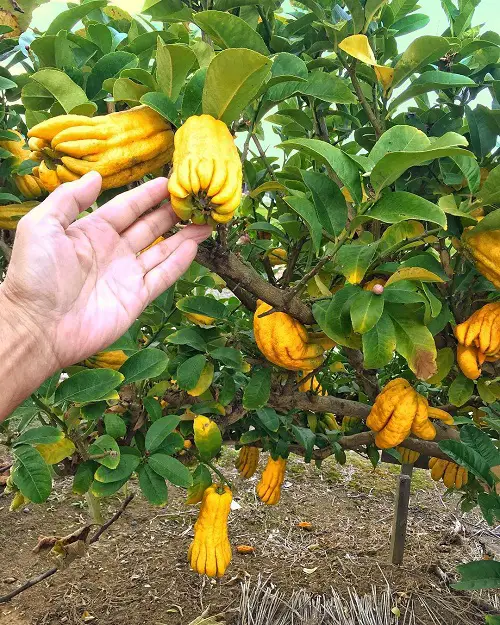
Botanical Name: Citrus medica var. sarcodactylis
USDA Zones: 10-11
This yellow-hued fruit is also known as Buddha’s hand because of its finger-like appearance. It was used as a temple offering in Buddhist religion.
4. Flatwoods Plum

Botanical Name: Prunus umbellata
USDA Zones: 8a-9b
Flatwood plums are round purple fruits that are .5 to 1 inch long and tart to sweet in flavor. Besides humans, they also attract various forms of wildlife, such as birds and squirrels.
5. Finger Lime
Botanical Name: Citrus australasica
USDA Zones: 8-11
This acidic fruit has a finger-like shape, hence the name finger lime. It’s used as a garnish or as an added flavor in various recipes.
6. Florida Strangler Fig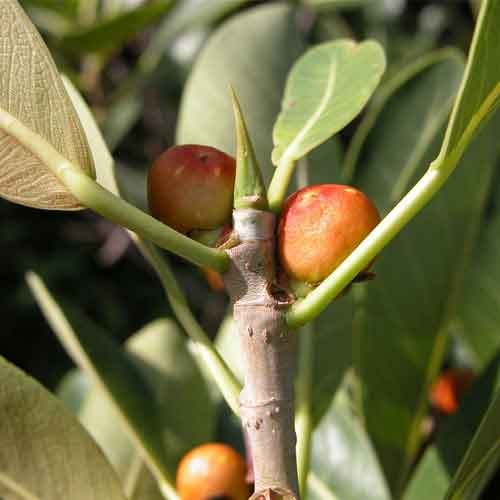
Botanical Name: Ficus aurea
USDA Zones: 10b-11
Ficus aurea produces round, fleshy edible fruits that can become 1/2 to 3/4 inches long in spring and summer. Native Americans and early settlers used these fruits as a food source in Florida.
7. Feijoa
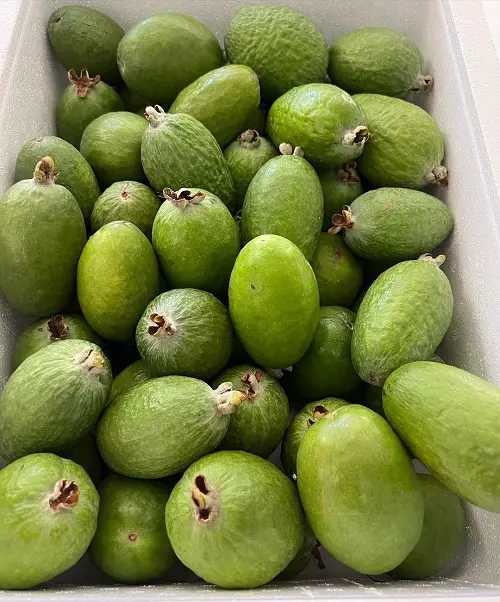
Botanical Name: Feijoa sellowiana
USDA Zones: 8a-10b
Feijoa fruit is green and egg-shaped in appearance with pineapple and spearmint taste. It takes 4-7 months to ripen in optimal conditions.
8. Five Flavor Fruit
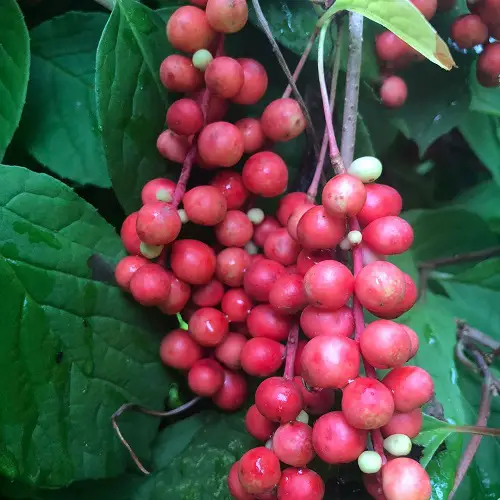
Botanical Name: Schisandra chinensis
USDA Zone: 4
Native to Northern China, the five-flavor fruit possesses five distinct flavors: sweet, sour, salty, bitter, and spicy. This fruit is also used to make medicines.
9. Fox Grape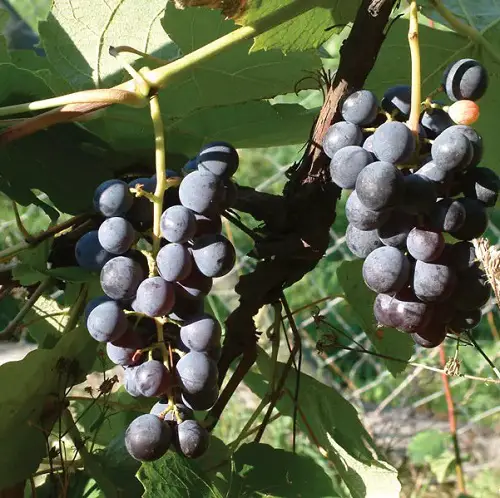
Botanical Name: Vitis labrusca
USDA Zones: 5-8
Vitis labrusca is a woody vine with edible blue-black grapes that become purple at maturity. These fruits have slipskins and sweet, earthy muskiness in flavor and aroma.
10. Fuji Apple
Botanical Name: Malus domestica ‘Fuji’
USDA Zones: 6a-8b
Fuji apples are medium-sized juicy fruits with orange-red blush. They offer a balanced flavor between sweetness and tartness.
11. Fuyu Persimmon
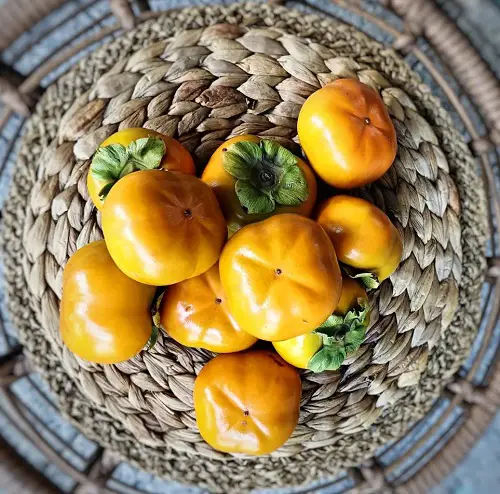
Botanical Name: Diospyros kaki ‘Fuyu’
USDA Zones: 7a-10b
Fuyu persimmons are 3-4″ wide edible fruits that become bright orange in late fall. Besides being an ideal food source, persimmons also add visual interest to landscapes.
12. Florentine Crab Apple
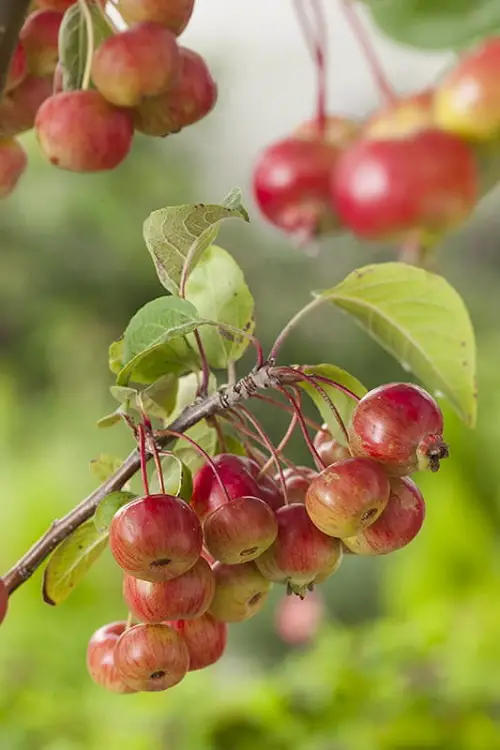
Botanical Name: Malus florentina
USDA Zones: 4-8
Native to the Balkan Peninsula, this ornamental tree produces small oval fruits that ripen in mid-autumn. The fruits can be eaten raw or cooked.
13. False Jaboticaba

Botanical Name: Myrciaria vexator
USDA Zones: 10-11
This Myrtaceae family member features purplish-black, globular fruits with white pulp and 1-2 seeds. These fruits look similar to grapes but have thick skins.
14. Fony Baobab Fruit
Botanical Name: Adansonia rubrostipa
USDA Zone: 10b
The fony baobab fruits have thick-shelled exteriors with reddish-brown hairs. They appear between October and November on 12-15 tall Adansonia rubrostipa trees.
15. Fukushu Kumquat
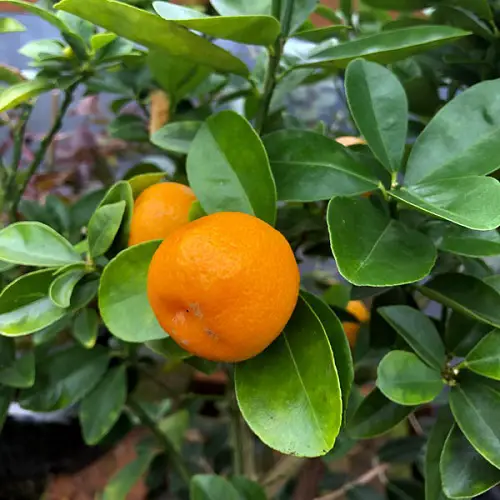
Botanical Name: Fortunella obovata
USDA Zones: 9-10
Originally from Japan, these kumquats are a good source of vitamins A, C, magnesium, and fiber. You can also use them as a remedy to cure sore throats, congestion, or coughs.
16. Farkleberry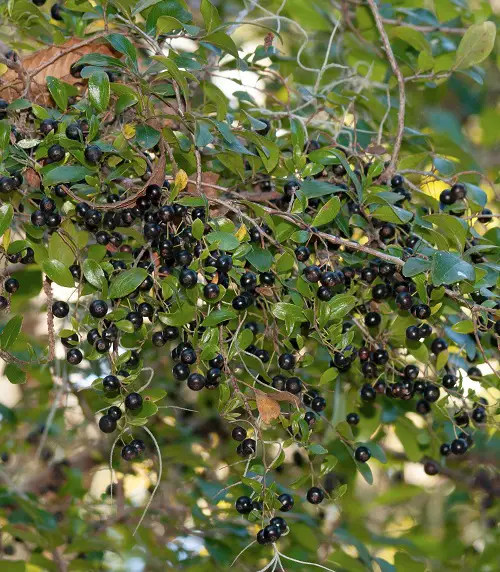
Botanical Name: Vaccinium arboreum
USDA Zones: 7a-9b
Farkleberry’s fruits grow abundantly in the rocky and sandy woodlands of southeastern North America. Unlike the fruits of other vaccinium species, the bland berries of farkleberry are inedible for humans.
17. Fibrous Satinash
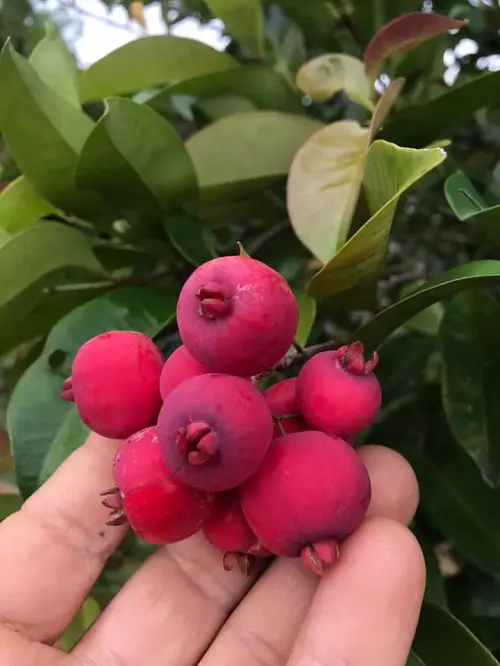
Botanical Name: Syzygium fibrosum
USDA Zones: Within 10a
Fibrous satinash is a globose fruit similar to the little pomegranate but with a sour taste. It is a key ingredient in jam, jellies, and confectioneries.
Some Odd Ones!
18. Five-leaved Bramble

Botanical Name: Rubus pedatus
USDA Zones: Unknown
Five-leaved bramble stands out in this list with bright red fruits. They are edible but not a popular food source among locals due to their small size.
19. False Pineapple
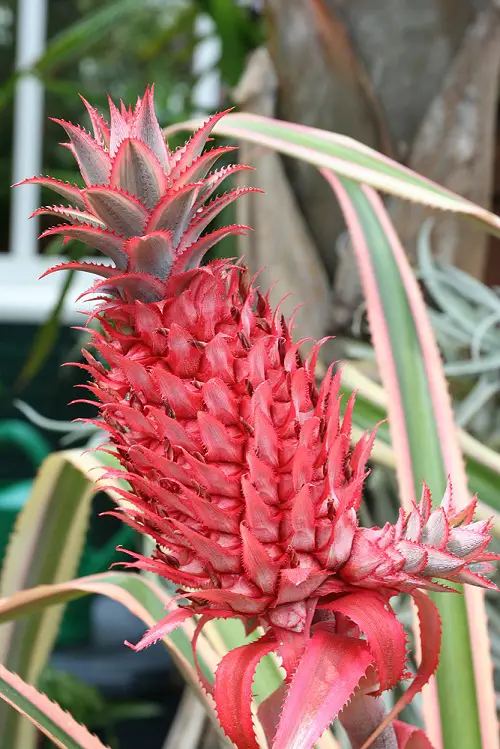
Botanical Name: Ananas macrodontes
USDA Zones: 10a to 11
False Pineapple is a bright pinky-red fruit frequently found in Central South America. It is less palatable than its cousin, pineapple.
20. Frost Peach
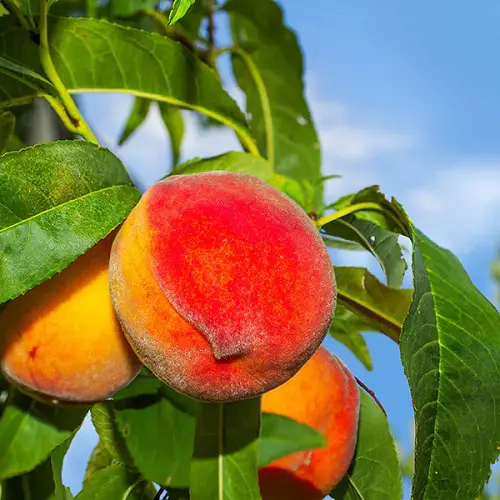
Botanical Name: Prunus persica ‘Frost’
USDA Zones: 5 to 9
Frost peaches are round to oblong-shaped yellow fruits with red blush. The flesh is sweet, juicy, and quite nutritious.
21. French Plantain
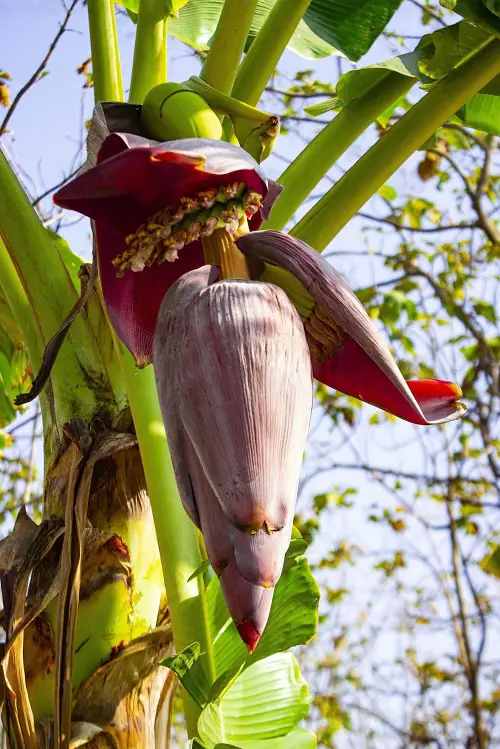
Botanical Name: Musa × paradisiaca
USDA Zones: 9 to 11
French Plantains are banana-like yellow-skinned fruits that are cultivated in warm climates. As these fruits are edible, you can use them in traditional dishes like soups, stews, and salads.
22. Falsa
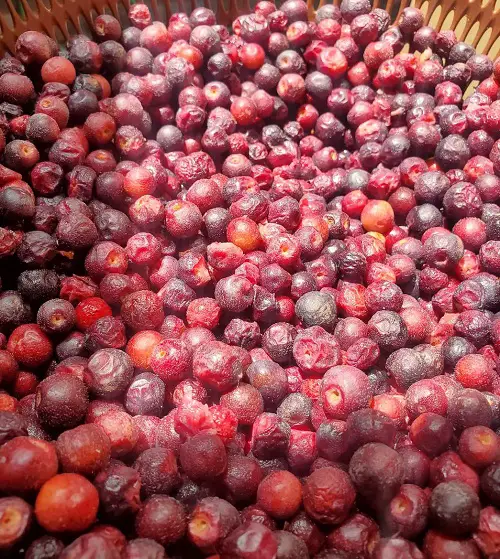
Botanical Name: Grewia asiatica
USDA Zones: 9 to 11
Falsa are small, edible purple-hued berries with a single seed. These drupes are a rich source of Vitamin C and other beneficial nutrients.
23. Fascell Mango
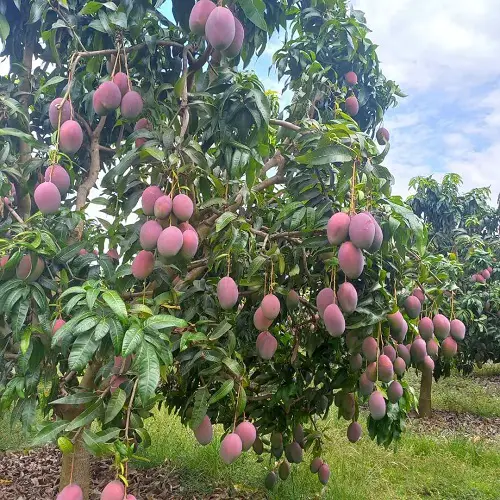
Botanical Name: Mangifera indica ‘Fascell’
USDA Zones: Unknown
The Fascell is a Florida mango variety named after farmer Michael Fascell. Besides humans, birds also love to feed on this amazing fruit.
24. False Mastic
Botanical Name: Sideroxylon foetidissimum
USDA Zones: 10a to 11
False mastic can reach heights of 50 feet or more with yellow to orange pulpy berries that ripen late winter-early spring. Its fruits are perfect for adding visual interest to any landscape.
25. Fe’i Banana

Botanical Name: Musa × troglodytarum L.
USDA Zones: Unknown
Musa troglodytarum fruits are different from common bananas due to their orange-red outer skin and yellowish-orange flesh inside. They are an important food source for Pacific islanders.



